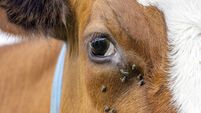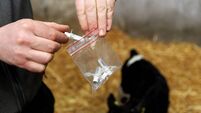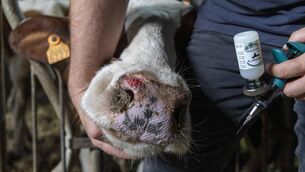Weekly supply of 33,100 cattle restricts sellers

As a consequence of the strong flow of cattle to plants since the beginning of the year, there is no reason for processors to pay more, leaving the trade unchanged at best this week, or tightening at the edges, as penalties cut into farmers’ cheques.
Intake last week hit 33,100 head, with a very strong supply of young bulls at around 6,000 head, steers at around 11,000 head, and almost 10,000 heifers making up the kill.
The supply last week was 1,500-2,000 head higher than the same week last year.
Only in the two consecutive weeks at the end of November and beginning of December has the cattle intake reached 33,000 head over the past year.
Quoted base prices for steers are 385-390 cents/kg.
In general, farmers are reluctant to sell at the lower end of this range, with most trying to hold out for a base of 390 cents/kg, but only getting it where their local factory is short of supply to meet their market demand.
While there are some reports of a few cents more being paid, it is not generally available.
Although the supply of heifers is strong, demand is also sharper than for the steers, and hence the premium over steer prices is running at least 10 cents/kg ahead, with most of the heifers making a base of 400 cents/kg.
Penalties being applied for heavier carcasses are hitting the young bull trade in particular and becoming a cause of major concern for the finishers of heavy continental steers.
Cow prices are slightly sharper at factories this week, particularly for heavy R-grade cows. The base price being offered for O/P-grade is 290-330 cents/kg.
Up to 350 cents/kg is attainable for the heavy R-grade cows.
In Britain, the beef trade has eased a little over the past week, with R4L-grade steers averaging equivalent to 474 cent/kg (including VAT).
The trade was reported more sluggish, with the best demand for fillets.
In France, the beef trade remained slow, with poor demand reported particularly for steak cuts such as entrecotes and cow hindquarters.
Demand has also decreased for fillets while increased volumes of competitively priced imported product have added competition on the market.
In Italy, there has been some uplift in the trade; it is hoped that upcoming retail promotions will also help the market.










